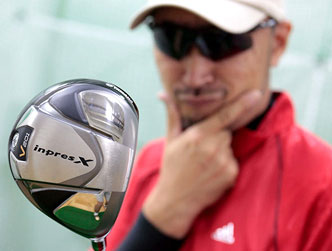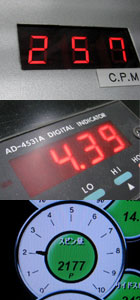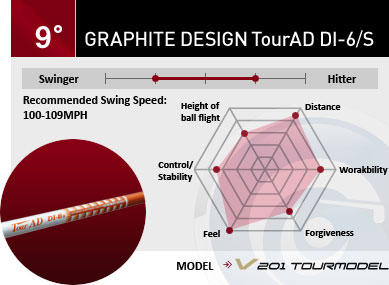 Yamaha has introduced a new series of test reports from respected independent tester Mark Kanai (who for some reason people always mistake me for, though I am not that tall nor swing that fast). Mark looks at all the current 2010 Yamaha drivers and tests each one with the most popular custom shafts available from Yamaha. He reports the clubs CPM and center flex numbers as well as launch monitor numbers and swing type recommendation. I’m going to post up some of his findings here so that readers can get a better idea of the models and shafts and which might fit them best. Do keep in mind though that numbers like CPM and flex can vary from different test beds and measuring techniques so please only use these as a guided reference.
Yamaha has introduced a new series of test reports from respected independent tester Mark Kanai (who for some reason people always mistake me for, though I am not that tall nor swing that fast). Mark looks at all the current 2010 Yamaha drivers and tests each one with the most popular custom shafts available from Yamaha. He reports the clubs CPM and center flex numbers as well as launch monitor numbers and swing type recommendation. I’m going to post up some of his findings here so that readers can get a better idea of the models and shafts and which might fit them best. Do keep in mind though that numbers like CPM and flex can vary from different test beds and measuring techniques so please only use these as a guided reference.
The V201 Tour Model…
The first driver we’ll look at today is the very limited and practically sold out/impossible to find V201 Tour Model. The V201 Tour is only available with the very good new Tour AD DI-6 shaft. The driver was tested in both lofts, 9 and 10*, both shafted with the only shaft available with this limited model the Tour AD Di-6 in Stiff flex. I’ll be showing the results from the 9* testing.


Looks more like a 400cc driver at address…
The V201 Tour is 440cc and very traditionally shaped. It has a deeper face and a high back design. The face sits square at address and the weighting is neutral for workability. Mark actually noted that at address the head seems smaller than 440cc looking more like like 400cc. From testing the recommended swing speed for this head and shaft combo is 100mph to around 109mph. The DI-6 is a mid launching low spin shaft and is very stable and CPM’ed out at 257cpm and a 4.39kg center flex. Test show it suits both the swinger and hitter with no problems handling an aggressive swing. However aggressive swingers closer to 110mph beware as it is possible to overpower a lighter 60g range stiff flex.
Mid trajectory, low spin….
We all know that Yamaha drivers produce awesome distance and that shows in Mark’s performance chart. Yamaha drivers starting with the 2009 RPM models began focusing on backspin and launch. Moving away from the high launch theory towards a more “optimal” launch and “optimal” spin design. Still this combo of low spinning head and shaft produce backspin around 2177rpm. The mid launch and low spin produce great control and roll. Workability is ranked high in the test as the driver will fade and draw at will. Just a note as well the 9* head was measured for real loft and it came out at… yes 9*. The driver is true to specs as expected since it is manufactured in Japan at a factory we all know (Exxx) with some of the tightest tolerances in golf.

DI-6 is balanced and stable…
Overall testing showed wonderful feel and sound from the driver. Hitting it towards the top of the face increased spin and launch but not excessively. Hitting it on the sweet spot produced the lowest spin and trajectory. Mark also noted that the DI-6 was not as rigid as he had expected, it had some flex to it but was still very stable and could not be rated as “hard” as say thye 9003 series. This is probably why he rated the shaft in between swinger and hitter rather than all on the hitter side like the 9003. The less rigid but stable flex is also what contributes to the feel of the club as it is very responsive on load and unload. He does warn as I mentioned above that the most aggressive swingers may overcome this shaft and be better off with the DI-6 tipped. (note that GD leaves tipping of their shafts up to the discretion of the installer/player and in most cases they are not tipped for retail installs).
Strong performing package…
So to cap it off, the better player or athlete golfer swinging from 100-109mph and including the semi aggressive player can play this driver to the best of its ability. It will provide mid trajectory low spin balls with fade and draw at will and will set up like a compact pear shaped head. Feel will exhilerate as will distance performance. I guess that’s why its so hard to get now in Japan! But if you’d like one we can certainly track one down from Yamaha.












Comments 1